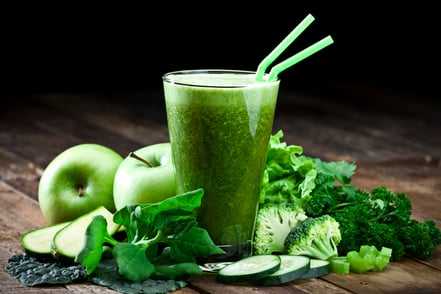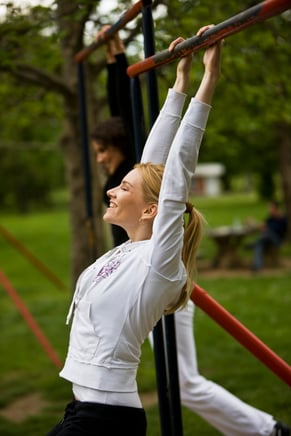 Losing weight is regularly ranked as one people's top New Year’s resolution. That’s probably why everyone and their mother is on a diet of some sort. One that is trending, and probably one you have heard about, is intermittent fasting. Intermittent fasting has been around for quite some time but has gained popularity over the years. The question is: is intermittent fasting really effective for weight loss? Yes and no. Confused? Let’s dig in.
Losing weight is regularly ranked as one people's top New Year’s resolution. That’s probably why everyone and their mother is on a diet of some sort. One that is trending, and probably one you have heard about, is intermittent fasting. Intermittent fasting has been around for quite some time but has gained popularity over the years. The question is: is intermittent fasting really effective for weight loss? Yes and no. Confused? Let’s dig in.
What Is Intermittent Fasting?
Intermittent fasting (IF) is an eating pattern that focuses on meal timing by cycling fasting and nonfasting periods. The eating pattern specifies timing of intake versus quality of food. Three popular methods of IF include the following:
- The 16/8 method
- Eat–Stop–Eat or Alternate-day fasting
- The 5:2 diet
The 16/8 is the most common and entails 16 hours of fasting followed by an 8-hour eating window.
The Evidence of the Effects of Fasting
Several studies have explored the effect of intermittent fasting on weight loss. A 2019 study observed 332 overweight and obese adults. They compared weight loss and weight maintenance across three groups; week-on-week-off caloric restriction (a common IF method), continuous caloric restriction (the traditional daily calorie deficit), and the 5:2 IF method. Mean weight and fat loss at 12 months were similar across the three groups, and all groups saw significant weight loss.
Another study supported these results. Alternate-day fasting did produce significant weight loss, as did the control group who followed the traditional daily caloric deficit. A systematic review also showed that intermittent fasting (ranging from 3–12 months) produced weight loss as long as participants maintained a caloric deficit.
A common theme among all these weight-loss studies is that all groups, both intermittent fasting groups and traditional calorie-restrictive groups, maintained some type of caloric deficit, meaning they were burning more calories than they were eating (calories in < calories out/burned). So, it wasn’t intermittent fasting that produced the weight loss; it was the caloric deficit. Granted, intermittent fasting was a way some could sustain the caloric deficit. However, others reported more pronounced feelings of hunger when following IF, and some studies had significantly higher dropout rates in the IF groups due to people struggling to follow the method.
The Bottom Line
Weight loss requires a caloric deficit to work successfully. The method in which one obtains this caloric deficit and maintains the caloric deficit will vary. One method, such as IF, may work for one person and not work for another. No weight-loss intervention, IF included, is a one-size-fits-all.
If you are one who naturally fasts (for example, you don’t eat breakfast) or one who needs structure, intermittent fasting may be a solid approach to meeting your caloric deficit. If you are one who binges after a fast or struggles to make it through a fast, intermittent fasting is not for you. Stick with the traditional caloric-deficit approach.
Finding the Weight-Loss Method That Works for You
The biggest thing that goes wrong, at least for weight loss, is failing to make a sustainable plan—one that produces lifestyle changes. If the method for weight loss you are trying is not working for you and is something you can’t stick with, it’s time for a change. If you’re struggling to find your sustainable lifestyle approach, consider seeing a Registered Dietitian.
This blog was written by Sabrina Goshen, NIFS Registered Dietitian. To learn more about the NIFS bloggers, click here.


 We’ve all been here before: When it seems the long, gray winter will never end and you make one more pot of hearty vegetable soup or another casserole; or when the lackluster tomatoes and almost pinkish-white strawberries just aren’t cutting it. It’s time to get creative!
We’ve all been here before: When it seems the long, gray winter will never end and you make one more pot of hearty vegetable soup or another casserole; or when the lackluster tomatoes and almost pinkish-white strawberries just aren’t cutting it. It’s time to get creative! How many times have you looked around a room full of people and seen nearly everyone buried in their phones? Their shoulders are slumped forward and their head is hung low. Or maybe you’re at work, and everyone’s busy composing emails with that same forward head position? Chances are, it won’t be long before you notice this posture elsewhere, and it can wreak havoc when it comes to the health of your shoulders.
How many times have you looked around a room full of people and seen nearly everyone buried in their phones? Their shoulders are slumped forward and their head is hung low. Or maybe you’re at work, and everyone’s busy composing emails with that same forward head position? Chances are, it won’t be long before you notice this posture elsewhere, and it can wreak havoc when it comes to the health of your shoulders.
 The temperatures are still frigid, and there are days when it seems as if the sun doesn’t shine. This is the time of year when we can start to feel down and less motivated, and maybe start to develop a case of the winter blues. It's easy for these negative thoughts to start creeping into our heads, but it is just as easy to kick these thoughts to the curb with these five simple steps.
The temperatures are still frigid, and there are days when it seems as if the sun doesn’t shine. This is the time of year when we can start to feel down and less motivated, and maybe start to develop a case of the winter blues. It's easy for these negative thoughts to start creeping into our heads, but it is just as easy to kick these thoughts to the curb with these five simple steps. As fitness professionals, we promote good habits to our clients and encourage people to make positive changes in their lives. Sometimes we help others find the spark to exercise or offer the accountability to make those hard-earned results stick. Overall, “helping individuals achieve success in goals and happiness in life” sums up what it means to be a trainer.
As fitness professionals, we promote good habits to our clients and encourage people to make positive changes in their lives. Sometimes we help others find the spark to exercise or offer the accountability to make those hard-earned results stick. Overall, “helping individuals achieve success in goals and happiness in life” sums up what it means to be a trainer. Mondays can be hard enough, getting back into the swing of things after a much-too-short weekend. The last thought on your mind is what to cook for dinner, right? You might go out to eat instead, pick up carryout, or eat a frozen pizza for the most painless dinner prep possible. However, what if you opt for something that is not only easy for you, but also healthy for you and the planet?
Mondays can be hard enough, getting back into the swing of things after a much-too-short weekend. The last thought on your mind is what to cook for dinner, right? You might go out to eat instead, pick up carryout, or eat a frozen pizza for the most painless dinner prep possible. However, what if you opt for something that is not only easy for you, but also healthy for you and the planet?